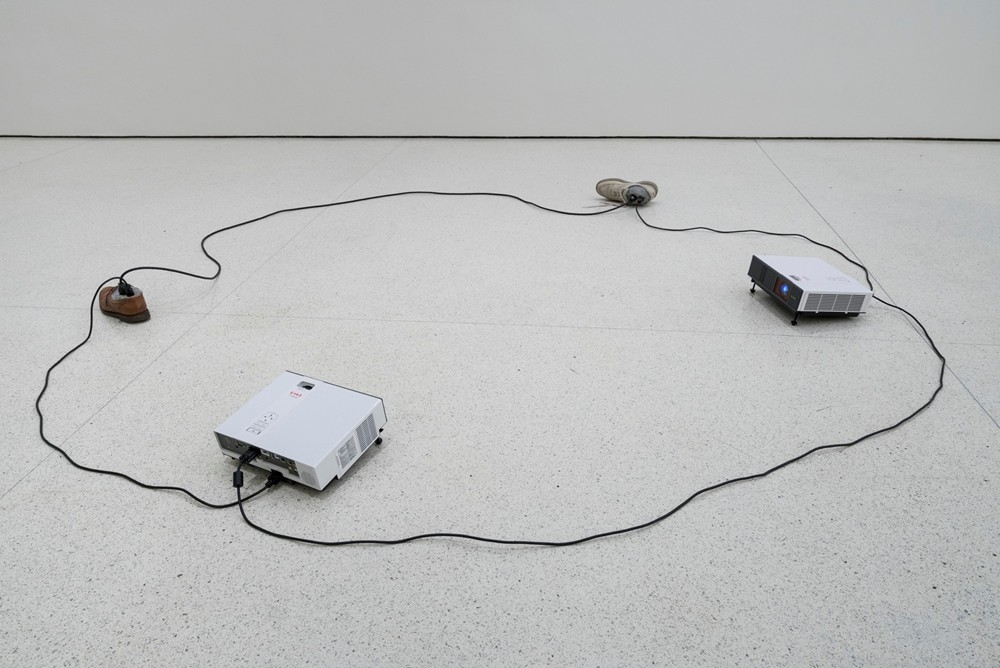Nonprojections for New Lovers, the new Hugo Boss Prize exhibition, showcases work by artist and experimental publisher, Paul Chan. The artist’s “nonprojections” expand the concept of the moving image as medium, as they use project onto thin air, not a screen or wall. “I wanted to create a new relationship with the notion of what a projection is,” he said. “Moving images are projected fairly regularly on sides of buildings, giant LCD screens, taxicabs. I wanted to understand what a projection is, without it having to be part of that continuum. Anything that projects out and becomes a rectangular square format is the same to me now, no matter how colorful, how spectacle-like, how important the images or the information,” he says. The exhibition is on view through May 13.
- For his newest body of work, photographer and geographer Trevor Paglen pairs a photograph, often of an idyllic scene—sunbathers at Mastic Beach, New York, for instance—with a research collage that maps the site’s relationship to the NSA’s massive data-combing efforts. The result: a new kind of landscape art “made up of our own information.”
- In her study of online museum publishing, Rhizome’s Orit Gat found that fifty percent of American arts organizations maintain a blog—all sharing the belief that “online publishing expands the museum’s audience, making it a potentially global one.” Digital arts publishing is a theme near and dear to Gat: she also edited the new (and final) edition of Bard’s Red Hook Journal, which includes perspectives on digital arts publishing by thinkers including Sarah Hromack and Dushko Petrovich.
- Michael Graves, one of the most prominent American architects and designers of the twentieth century, has died at the age of 80. A member of the New York Five, Graves is best known for designing the postmodern Portland Building and his iconic teakettle designs.
- In The Collection and the Cloud Amelia Abreu discusses the lengths that Internet archivists are willing to go to in order to organize and protect online data as we approach a possible “digital dark age.” The Internet Archive, a San Francisco-based digital library, is situated in a former Christian Science temple. Its sanctuary wall is lined with lofty server towers that remind us of “the infrastructure needed in order to collect and preserve digital things.”
- The City of Sacramento has approved the public installation of Jeff Koons’ Coloring Book sculpture, but the price tag—$7.5 million—has some artists arguing that the city’s money would be better spent on art produced locally.
- In an interview with Zachary Kaplan, Astra Taylor counters the hype for digital “democracy” and market-driven culture, arguing that state subsidy could provide better spaces for democracy in a more economically sustainable manner: “New technologies amplify old media hierarchies. So if continuity is what we are dealing with, then some of the old solutions—if we want to call them that—to media consolidation, commercialism, centralization could still work, too. These are regulatory ideas, public investment in media, and so forth.”
Follow Art News From Elsewhere on the Walker Art Center homepage or via @walkermag, the Walker’s editorial-focused Twitter feed.




